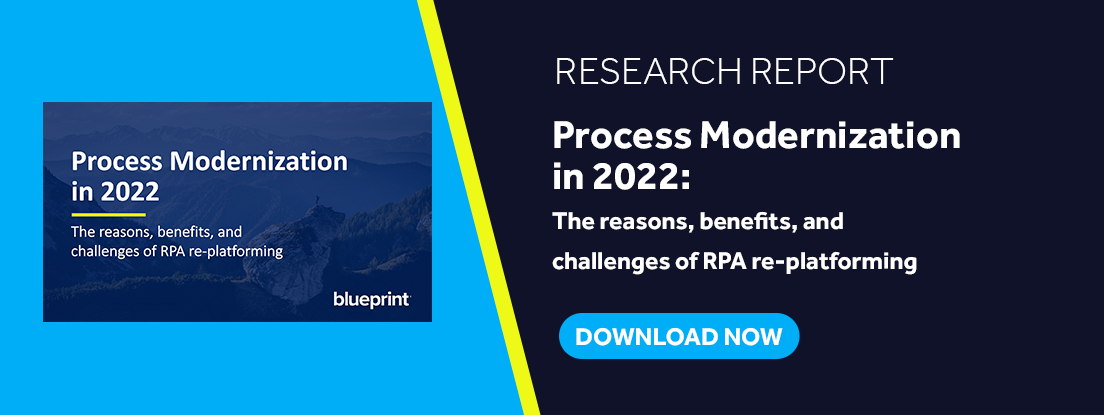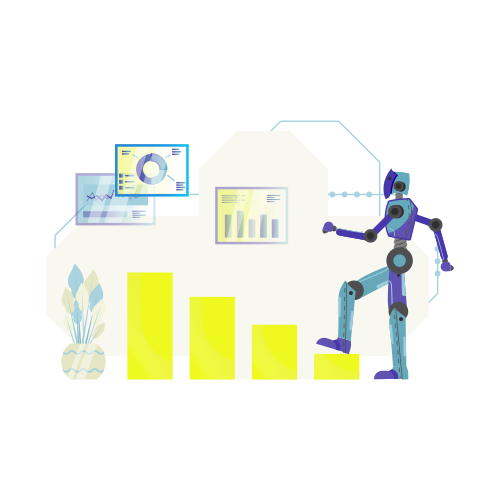5 Automation Re-platforming Trends in 2022
Recent Blueprint Research Reveals Why Organizations are Switching RPA Tools, the RPA Vendors They’re Re-platforming to, the Re-Platforming Challenges They’re Facing, and the Benefits They’re Realizing
A lot of organizations are switching RPA tools. They’re taking their automation estates and redeploying their automated processes onto another RPA platform for various reasons.
To understand what’s driving companies to re-platform their automation portfolios, which tools they’re moving their automated processes to, and all the benefits and challenges they’re encountering in their re-platforming journey, Blueprint surveyed 400 Executives, Directors, Department Heads, Senior Managers, and Analysts from the United States, the United Kingdom, Canada, France, and Germany.
These are the five key automation re-platforming trends we uncovered:
Trend #1 – Organizations are re-platforming to leverage better capabilities and features in newer generation RPA tools
One of the primary objectives of the research Blueprint commissioned and performed was to understand precisely why so many organizations have already switched RPA tools or are in the process of re-platforming their automation estates to another platform.
When surveyed, organizations who have already redeployed their automated processes to another RPA tool reported that leveraging better capabilities and features was the biggest motivator.
Companies in the process of switching RPA platforms claimed better compatibility with their enterprise architecture as the driving force behind their re-platforming decision.
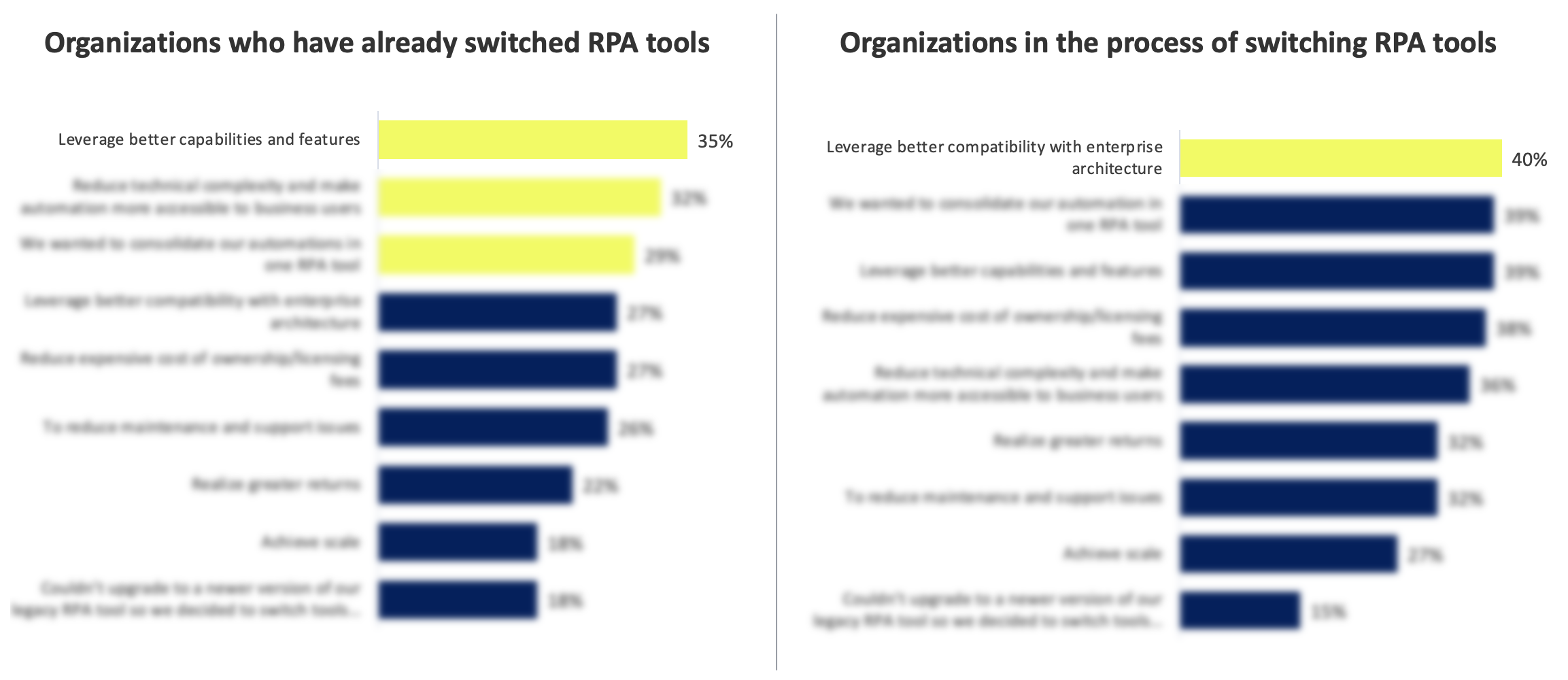
Trend #2 – IT is the department driving the demand for automation re-platforming
Automation touches all parts of an organization and has cross-departmental stakeholders, however, Blueprint wanted to understand which department was driving the demand for organizations to re-platform their automation estates.
For both the organization that already switched RPA platforms and those in the process of switching, IT was reported as the department spearheading re-platforming.
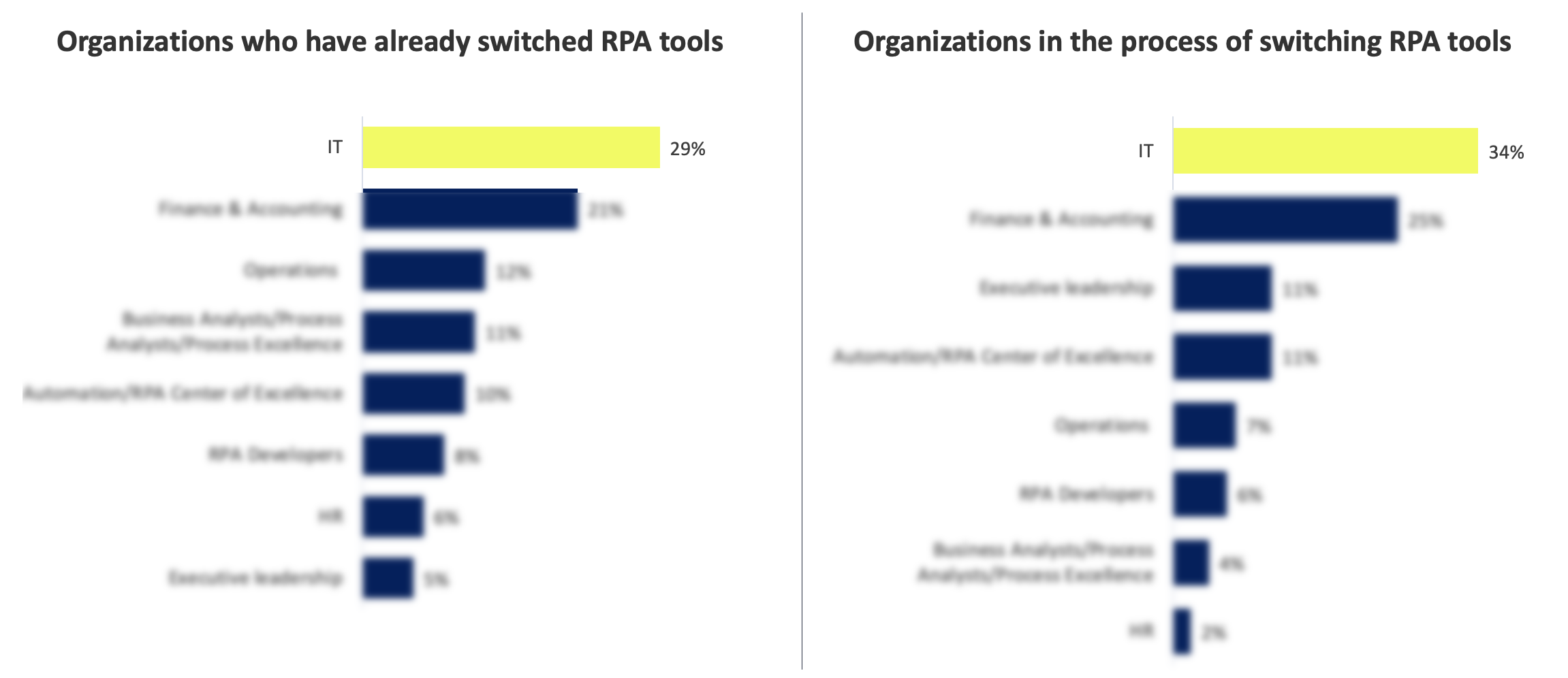
IT would be at the forefront of a technology switch because they’re the department that’s charged with identifying better, more cost-effective solutions with a higher yield. From an automation perspective, the desire to re-platform to an RPA tool that offers better features and capabilities and makes automation more accessible to the average business user is an attractive option that any IT department would readily support. It reduces operational overhead and promotes automation at scale while lightening the dependence on valuable IT resources.
Trend #3 – Better capabilities/features and higher returns are the most common benefits realized after re-platforming
To discover what organizations gained from re-platforming their automation estates to another RPA tool, companies that had already switched RPA vendors were asked what benefits they realized.
They reported experiencing better capabilities/features and higher returns as their biggest benefits, which is unsurprising considering these expectations were what fanned re-platforming in the first place.
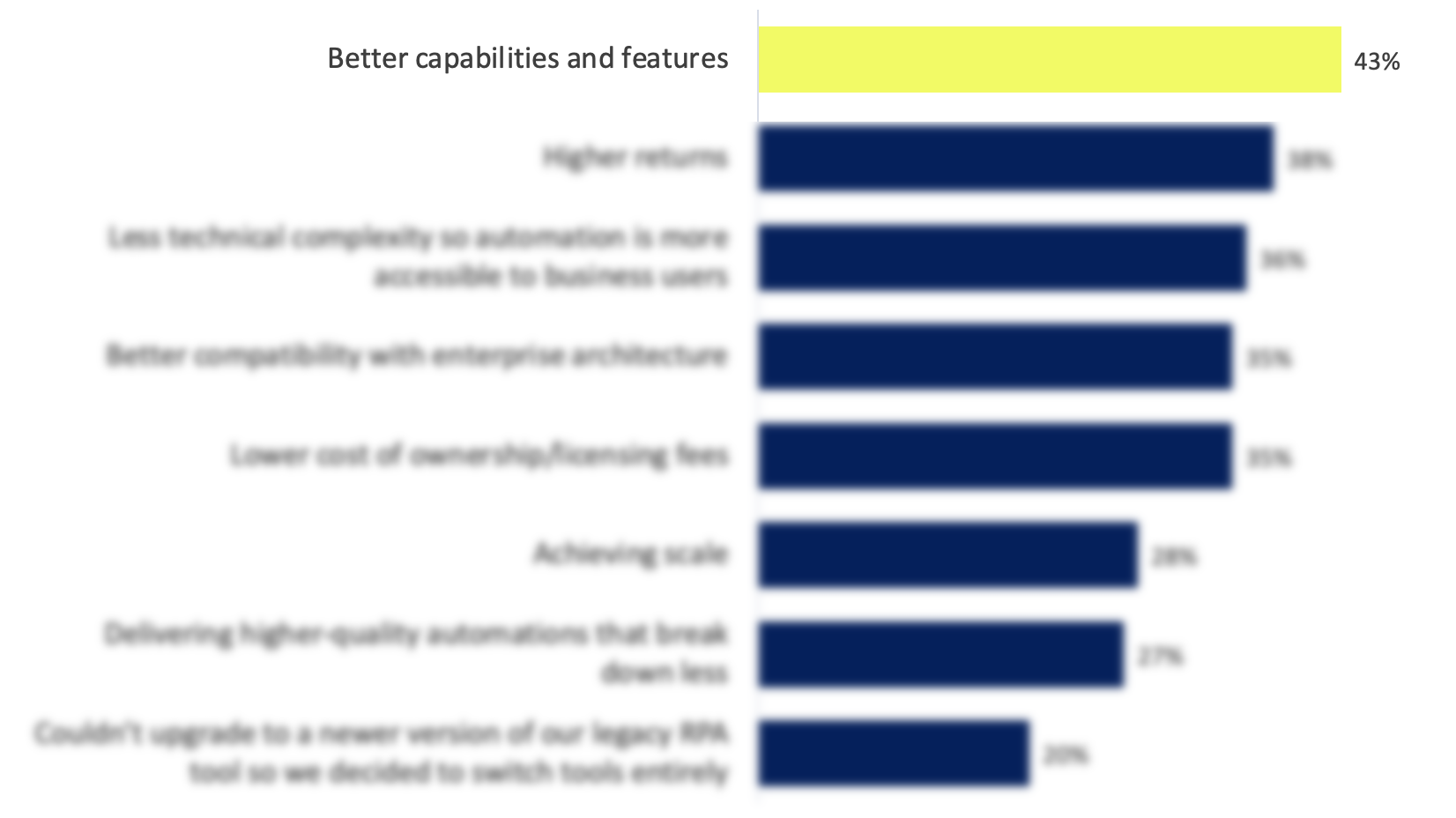
Trend #4 – The need to rebuild automations is the most common challenge organizations face when re-platforming their automation estates
Redeploying entire automation estates is no easy feat. That’s why so many organizations enlist the help of Blueprint to re-platform and modernize their automated processes from legacy RPA solutions onto next-generation tools 3x faster and at 25% of the cost while improving their entire automation ecosystem and gaining invaluable insight in the process.
The need for support in any re-platforming effort is very real because RPA tools specify automations differently. For an automated process to work in another RPA platform, it must be investigated, understood, rebuilt, tested, and then deployed using highly-skilled, technical resources. It’s no wonder then that the greatest challenge organizations encountered while switching RPA tools was the need for specialized resources and the burden of rebuilding their automation estates from scratch.

Trend #5 – The majority of organizations are re-platforming their automation estates to Microsoft Power Automate
Organizations are predominantly moving their automation estates from Automation Anywhere and Blue Prism, with Microsoft Power Automate as the most likely destination.
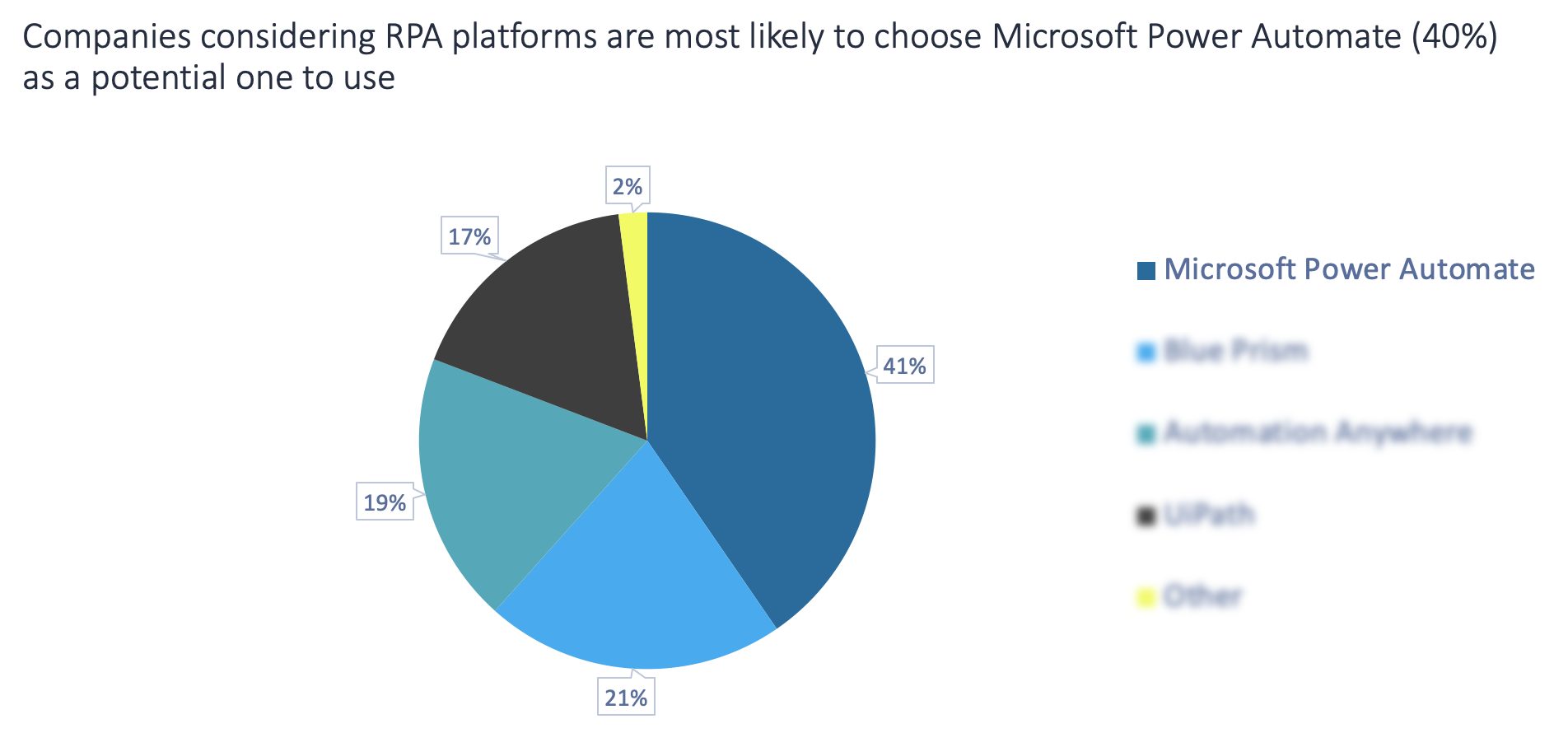
The reason Microsoft is garnering the lion’s share of re-platforming companies is because Power Automate offers:
- Deep extensibility and compatibility with other Microsoft services and products that most companies use
- A more attractive price-point, and
- Better ease of use, democratizing automation to a bigger portion of any organization, enabling greater scale
These trends are just a small sample of all the insight and meaningful data Blueprint uncovered on the state of automation re-platforming.
For all the findings and in-depth analysis, the research provides – including how much companies are spending to re-platform their automation estates, how long it’s taking them, and what solutions or services they’re using for help – download the full Process Modernization in 2022 report for free.
Share this
Recent Stories

What is Value Mapping: Everything You Need to Know

The ROI in Value Mapping


